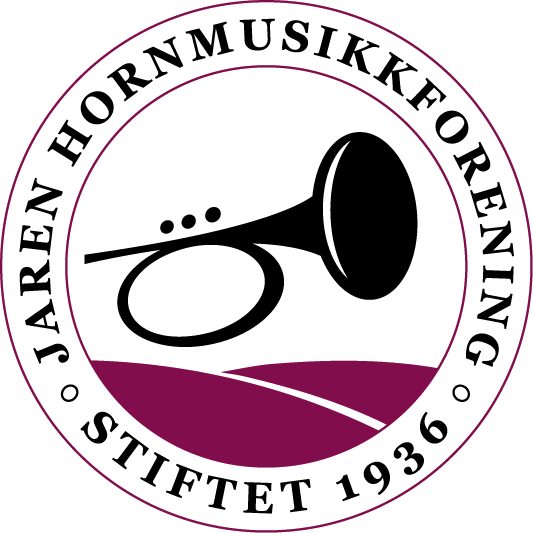Jaren Hornmusikkforening will premiere a new piece by Dan Price as their own choice at the upcoming Norwegian Brass Band Championships. The piece was specially written for the band and their conductor Howard Evans, and finds its inspiration in norse folklore, and the legendary Yggdrasill tree, that makes up the entire Norse cosmos.
For english readers, program notes can be found below:
SCORE NOTES – YGGDRASILL
In Norse mythology, Yggdrasill is an immense Ash tree that connects the nine home-worlds of the Norse cosmos. Yggdrasill (pronounced: Ig-dru-cell ) is generally accepted to mean Odin‟s Horse („Ygg(r)’ being one of Odin’s many names and ‘drasill’ meaning ‘horse’), Odin being the ruler of the Gods.
As well as connecting the nine worlds together, this cosmic tree is also home to Níðhöggr a dragon who continually gnaws at the roots of Yggdrasill in anticipation of the arrival of those guilty of murder, adultery or oath-breaking. At the top of the tree, amongst the heavens, is the home of Veðrfölnir, a hawk, who sits between the eyes of an unnamed eagle who remains perched at the top of Yggdrasill preserving the wisdom and knowledge that Veðrfölnir collects on his journeys between the worlds. Ratatoskr, the squirrel, spends his life running between the dragon and the eagle carrying messages or insults.
The Nine Worlds:
Hel
Ruled by a female also known as Hel, it is a realm for the damned with a dark and suffocating atmosphere. A place of eternal unrest. Ruled by Surtr, Muspelheim is the land of the Fire Giants.
Muspelheim – The Realm of Fire
The Sun and Stars originated from this world.
Niðavellir – A Dark Dwelling
Niðavellir is the home of the Dwarves or Dökkálfar (Dark Elves). They dwell in the earth, warmed by the fires of Muspelheim and Hel, gluttonously hoarding gold.
Vanaheimr – Home of the Vanir
The Vanir are a group of Gods who are associated with fertility and wisdom. They also have the ability to look into the future.
Jötunheimr – Home of the Giants
Jötunheimr is the home of the giants who were banished from living within the Gods worlds. They are volatile and like to be a menace both to humans and the Gods.
Niflheim – Mist Home
Niflheim is a realm of ice and cold. The world is dominated by the nine frozen rivers and is populated by Frost Giants and Niflungar (Children of the Mist), spirits who like to hoard treasure.
Álfheimr – Elf Home
This is the home of the Light Elves and it is located within heaven. The Light Elves are described as being “lighter than the sun itself”.
Midgard – Middle Enclosure (Earth)
Midgard is the realm of humans and is located in the centre of Yggdrasill. The realm is
said to have been created from the flesh and blood of Ymir, the ancestor of all giants and is connected directly to the Gods in Asgard by Bifröst, a burning rainbow bridge.
Asgard – Home of Æsir
This is the home Æsir tribe of Gods. It is ruled by Odin and his wife Frigg from his seat in the enormous and majestic Hall of the Slain; Valhalla.
There is no specific order in which these worlds appear in the branches of Yggdrasill other than Hel always appears in the trees roots and Asgard at its pinnacle.
The work is an extended piece for brass band and percussion which comprises of seven musical scenes, each reflecting my own impressions of the individual worlds found in the
Yggdrasill legend.
Starting in the earth, amongst the roots of this colossal tree and gradually working its way around the trunk into the clouds and lofty home of the Gods; there should be a clearly defined journey from the opening bar to the final cadence. The work evolves
organically through each impression and builds from darkness into light.
As with most of my music, I attempt to conjure images and pictures with the sounds and musical techniques I employ and I urge anyone who performs any of my work to seek out the pictures hidden within the scores. The mysteriousness of hell, the crackle and spits of fire, the greediness and devilry of the dwarves, the jocular amble of the giants, the ethereal sparseness and great wisdom of the elves or the sound of Odin‟s steed Sleipnir, bearing his master back to Valhalla are all hidden within the music.
The work is based on the following twelve note row, from which all the musical material found in the score is developed.
The row appears in full Prime, Retrograde, Inversion and in Inverted Retrograde statements at different points through-out the work but also appears segmented in several motifs and augmented with additional pitches to disguise the row.
Dan Price September 2014

